Listen to the Podcast
4 Aug 2023 - Podcast #843 - (20:33)
It's Like NPR on the Web
If you find the information TechByter Worldwide provides useful or interesting, please consider a contribution.

If you find the information TechByter Worldwide provides useful or interesting, please consider a contribution.
How important are all the data files, financial records, photographs, and documents on your computer? Would you risk losing all of them just to save $120 per year?
I’m a big spender when it comes to backup. In addition to the $120 I pay for CrashPlan every year, I pay $30 to GoodSync and another $36 for extra Google Drive space. Even mechanical disk drives are unlikely to fail these days and SMART technology means that you’ll probably get an early warning before the drive fails. Bad things can still happen.
Click any small image for a full-size view. To dismiss the larger image, press ESC or tap outside the image.
 A nearby lightning strike could fry your computer and all attached storage devices. A fire could destroy your home or office and the computers located there. A fraudster could sneak malware onto your computer, encrypt the data, and demand thousands of dollars to return it. You might even do something wrong and delete all the files.
A nearby lightning strike could fry your computer and all attached storage devices. A fire could destroy your home or office and the computers located there. A fraudster could sneak malware onto your computer, encrypt the data, and demand thousands of dollars to return it. You might even do something wrong and delete all the files.
I did that several decades ago. When installing a second disk drive in a computer, I accidentally formatted the main drive. Fortunately, I had a backup even in those days. So if spending $10 to $15 per month would ensure the safety of your data, would you do it?
 Around here, backup is a multi-step process: CrashPlan runs continuously backing up files to a remote server as they are created or modified; a system of daily backups starting at 4pm copies all files created or changed in the previous 24 hours to a local backup drive; full backups of the data drives are performed every Wednesday; and the boot drive is imaged twice each week, on Sunday and Wednesday. Some files are also backed up continuously to Google Drive.
Around here, backup is a multi-step process: CrashPlan runs continuously backing up files to a remote server as they are created or modified; a system of daily backups starting at 4pm copies all files created or changed in the previous 24 hours to a local backup drive; full backups of the data drives are performed every Wednesday; and the boot drive is imaged twice each week, on Sunday and Wednesday. Some files are also backed up continuously to Google Drive.
When data exists in a single location, it isn’t really safeguarded. That means the backups that are stored on-site can’t be depended on as backups because a single event could destroy the computer, disk drives attached to the computer, and backup drives stored in the same building. Those local backups are for convenience only. They would allow fast recovery from an operator error.
The essential and most valuable part of my backup plan is CrashPlan because the files are stored hundreds of miles away from the computer and because CrashPlan maintains versioned backups.
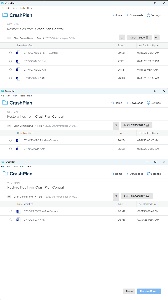 Users want to recover the most recent version of a file in most cases. When a file has been deleted or damaged, you’ll want the latest copy so that you won’t need to repeat your most recent actions. Most cases. Most of the time. Not always.
Users want to recover the most recent version of a file in most cases. When a file has been deleted or damaged, you’ll want the latest copy so that you won’t need to repeat your most recent actions. Most cases. Most of the time. Not always.
When you open a file on Wednesday morning after changing it on Tuesday afternoon, you’re probably planning to continue working on the file. But what if the file was a 20-page document when you saved it Tuesday afternoon and it’s only 15 pages long when you open it on Wednesday morning?
It’s easy for something like this to happen. Here’s one way:
You realize the next day what you did, but the backup application has already saved the shorter file to the server. It’s the same as what’s on the computer. File versioning is the solution to this problem. There’s no need for panic.
The illustration shows a file I’ve been working on for a few days. Crash Plan offers me the the current version from today, three previous versions from today, two versions from yesterday, and two versions from the day before yesterday. If you’re not sure which is the right version to recover, it’s possible to download several versions and compare them.
Regardless of how the problem occurred, recovery is surprisingly easy.
As important as CrashPlan is, my backup procedure would be incomplete without GoodSync and AOMEI Backupper.
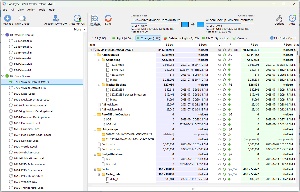 GoodSync works with just about every type of storage you can imagine, from a disk on the computer you’re backing up to Windows shared folders, from Sky Drive to Google Drive, and from GoodSync Connect or FTP to Cloud Drive and Dropbox. GoodSync is what I use to back up data drives on the system once per week and to back up working filed every afternoon.
GoodSync works with just about every type of storage you can imagine, from a disk on the computer you’re backing up to Windows shared folders, from Sky Drive to Google Drive, and from GoodSync Connect or FTP to Cloud Drive and Dropbox. GoodSync is what I use to back up data drives on the system once per week and to back up working filed every afternoon.
There’s one additional critical function GoodSync is responsible for. I copies all documents, email messages, and photographs from my wife’s computer to a special folder on my computer. This allows files from her computer to be backed up securely to CrashPlan.
GoodSync allows for backup (one-way) operations or synchronize (two-way) operations. You can also decide whether you want file deletions to be propagated or if you want a file to persist on the backup drive even after it’s been deleted from the original disk. It’s an uncommonly flexible application.
Backups can be scheduled or GoodSync can monitor directories and back up changed files immediately or after a delay of any length. Alternatively, you can schedule backups so that GoodSync will analyze files and backup changed files every hour, every day, every week, or on whatever schedule you like.
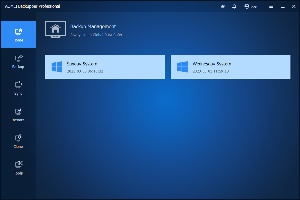 The operating system and program files are not backed up by CrashPlan or by GoodSync. This is by design because these file change constantly. Backing up the boot drive requires a specialized application. I use AOMEI Backupper for this task and create two disk image backups each week, one on Wednesday and one on Sunday.
The operating system and program files are not backed up by CrashPlan or by GoodSync. This is by design because these file change constantly. Backing up the boot drive requires a specialized application. I use AOMEI Backupper for this task and create two disk image backups each week, one on Wednesday and one on Sunday.
There’s a free version, but AOMEI Backupper Standard omits some key convenience features. The pro version costs just $40 and there are continuous “limited time” offers that aren’t really time limited.
Websites:
In computer years, 1996 is ancient history. That’s when the utility that became Curl (or cURL) was released. The utility was added to Windows earlier this year, along with Tar. Although these are primarily intended for developers, we regular users will also find some value.
Tar is a command line tool that allows a user to extract files and create archives. The Windows File Explorer can open many archive files, so Tar is less important for most users and I won’t describe its use here.
Click any small image for a full-size view. To dismiss the larger image, press ESC or tap outside the image.
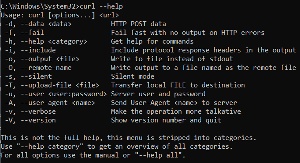 Curl may seem unimportant, too, because its primary use involves transferring files to and from remote servers. But there’s more and that’s where we’re going.
Curl may seem unimportant, too, because its primary use involves transferring files to and from remote servers. But there’s more and that’s where we’re going.
I’ve described previously how to use a Powershell command to examine a website’s code. I use the command to safely look at a website that I suspect may be malicious. Powershell is verbose and the command to view the 30 June TechByter Worldwide program is: $w = (new-object net.webclient).DownloadString("https://www.techbyter.com/2023/0630.html"). It’s faster and easier to use Curl: curl -v https://www.techbyter.com/2023/0630.html.
This is a quick and easy way to download the full code for a page so that it can be examined for malicious code. Because of how Curl works, it provides even more useful information than Powershell does. Before outputting a page’s source code, Curl reports information about the site is has connected to. For example, curl -v https://www.chase.com reports all normal response codes and a secure connection on port 443. Checking the URL from a scammer (https://cjajhhj.r.bh.d.##REDACTED##.com/tr/cl/si_9Kkz1zxNtsntAJ_Mtcxkc-##REDACTED##) returns clearly suspicious information such as a 302 redirect code, which would be unlikely on a legitimate site.
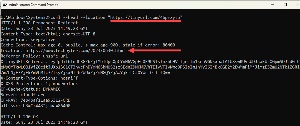 Link shorteners such as Bitly, TinyURL, Cuttly, ShortIO, and others are handy, but they can disguise nefarious web addresses. Fortunately Curl can reveal what’s behind the link. Perhaps you have a short URL such as https://tinyurl.com/46prxytp and you’re unwilling to click it until you know the actual target. From the command line you can type curl --head --location "https://tinyurl.com/46prxytp" and you’ll see the true target address. Once you know the address, you can use the -v option to see the page source.
Link shorteners such as Bitly, TinyURL, Cuttly, ShortIO, and others are handy, but they can disguise nefarious web addresses. Fortunately Curl can reveal what’s behind the link. Perhaps you have a short URL such as https://tinyurl.com/46prxytp and you’re unwilling to click it until you know the actual target. From the command line you can type curl --head --location "https://tinyurl.com/46prxytp" and you’ll see the true target address. Once you know the address, you can use the -v option to see the page source.
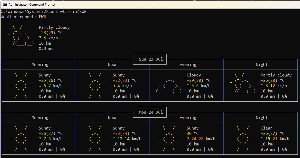 With all of the web-based weather services, maybe this is silly, but Curl can even be used to get weather information. Type curl wttr.in/EWR to see the weather in Newark, New Jersey. Airport codes work, but you can also type the name of a city. Curl wttr.in/Columbus will return the weather for Columbus, Ohio. If you want Columbus, Indiana, you’re out of luck even if you know the city’s airport code (BAK).
With all of the web-based weather services, maybe this is silly, but Curl can even be used to get weather information. Type curl wttr.in/EWR to see the weather in Newark, New Jersey. Airport codes work, but you can also type the name of a city. Curl wttr.in/Columbus will return the weather for Columbus, Ohio. If you want Columbus, Indiana, you’re out of luck even if you know the city’s airport code (BAK).
Use DuckDuckGo, Google, or Bing to search for information about using Curl. It may be an antique, but it’s not useless. When released in 1996, Curl was known as “httpget”. Later it was renamed “urlget” and became “cURL” in 1998.
We need computers when we’re working on complex tasks such as managing a business, preparing a tax return, calculating the speed of light through water, or trying to find the best purchase price for a car. But sometimes it’s nice to just relax with your old friend, the computer. Here are some sites that will help with that; or, as I’ve titled it I Will Cite Some Silly Sites That Are Sights For Sore Eyes.
A few of these sites may have a redeeming social value or two, but most of them are just silly time wasters. So don’t use them at the office.
Let’s start with CatGPT. No, not ChatGPT even though Chat in French translates to cat. And you probably don’t want to know what ChatGPT means if those sounds are spoken in French. (If you do, go here.) When you visit CatGPT, you can ask a question and a cat will answer. Keep in mind that cats know only one word even though they may pronounce several variations of “meow”. Maybe try “Tell me everything you know about Schrödinger’s cat.”
Some of these sites have been developed on a whim, so they may disappear at any time. Others are preliminary version of commercial sites that allow some amount of limited free use.
Click any small image for a full-size view. To dismiss the larger image, press ESC or tap outside the image.
 Stable Diffusion Online will create image if you tell it what you want in plain English. I tried “large fluffy orange cat with toy mouse” and got four recommendations. The site warns users that Due to the large number of users, the server may experience problems. If you encounter an error, please try again.
Stable Diffusion Online will create image if you tell it what you want in plain English. I tried “large fluffy orange cat with toy mouse” and got four recommendations. The site warns users that Due to the large number of users, the server may experience problems. If you encounter an error, please try again.
Maybe you’d like to have a little guy on a bike ride a path. There are dozens (maybe hundreds) at FreeRideHD and you can draw your own.
If you’re somebody who used to play a lot of video games in the old days, check out GuessTheGame. You’ll see samples of video game screens and then you have six tries to guess which game the image is from. Those who haven’t spent a lot of time playing old video games should probably stay away.
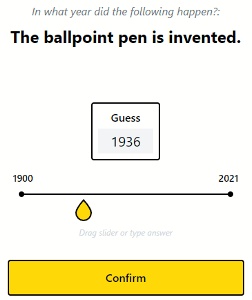 Guess the the Year shows a series of events and you need to guess which year the event occurred. The game starts with 100 points and you lose one point for the number of years you miss the event by. For example, you might be given “Seoul hosts the Summer Olympics.” If you guess 1980, you’ll lose 8 points because the actual date was 1988. The game ends when you have no points left.
Guess the the Year shows a series of events and you need to guess which year the event occurred. The game starts with 100 points and you lose one point for the number of years you miss the event by. For example, you might be given “Seoul hosts the Summer Olympics.” If you guess 1980, you’ll lose 8 points because the actual date was 1988. The game ends when you have no points left.
Here’s one site has redeeming social values that I mentioned earlier. ZType is a lot like the old Space Invaders game, but the invaders are words. The user has to type the words before they reach the bottom of the screen, so it’s a fun way to practice touch typing (or maybe even to learn touch typing).
 More or Less is kind of like The Price is Right on a combination of LSD and steroids. You choose topics such as the net worth of the super rich, the sizes or populations of countries, IMDb movie ratings or the cost to make motion pictures (with or without considering inflation), how many stores retailers have, populations of cities, and many more in topic categories ranging from trends and games to world and people to weights and YouTube. The values are shown in Euros.
More or Less is kind of like The Price is Right on a combination of LSD and steroids. You choose topics such as the net worth of the super rich, the sizes or populations of countries, IMDb movie ratings or the cost to make motion pictures (with or without considering inflation), how many stores retailers have, populations of cities, and many more in topic categories ranging from trends and games to world and people to weights and YouTube. The values are shown in Euros.
Listed is similar to More or Less, except that it displays an exterior view of a home that recently sold. Initially you don’t see the the location. A house that sells for $300,000 in rural Ohio might sell for $5,000,000 in Los Angeles. After the first guess, which will probably be wrong, you’ll see the city and state. If your second guess is wrong, the property type will be shown. After each guess, there are additional clues and an indicator shows whether your guess was high or low. This might be a good game to use in perfecting a binary guessing strategy.
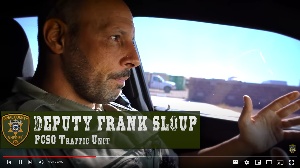 A YouTube channel by the Pinal County Sheriff’s Office offers a Fridays with Frank series that follows traffic deputy Frank Sloup as he writes traffic tickets in Pinal County, Arizona, southeast of Phoenix and northwest of Tucson. A couple of things are interesting about Sloup: First, he’s from Long Island; second, he has a car-side manner that almost makes me want to travel to Arizona, drive too fast, and and find his unmarked cruiser behind me. The sheriff’s department has a camera man ride along with Sloup occasionally and record videos. Sloup has been in law enforcement for more than 20 years and has has been with the sheriff’s traffic unit in Arizona for 5½ years. He is sometimes a bit condescending, but always polite and direct.
A YouTube channel by the Pinal County Sheriff’s Office offers a Fridays with Frank series that follows traffic deputy Frank Sloup as he writes traffic tickets in Pinal County, Arizona, southeast of Phoenix and northwest of Tucson. A couple of things are interesting about Sloup: First, he’s from Long Island; second, he has a car-side manner that almost makes me want to travel to Arizona, drive too fast, and and find his unmarked cruiser behind me. The sheriff’s department has a camera man ride along with Sloup occasionally and record videos. Sloup has been in law enforcement for more than 20 years and has has been with the sheriff’s traffic unit in Arizona for 5½ years. He is sometimes a bit condescending, but always polite and direct.
I would call Pointer Pointer pointless, but it’s all about pointing. Load the site, move the mouse cursor somewhere and release it. The site will search the internet to find an image in which someone is pointing at the mouse cursor. So although there’s a lot of pointing, it really is pointless.
Idiocy isn’t new. In 2003, somebody had an idea for disposable digital camera. Apparently they though that disposable film cameras worked and there might be a market for a digital camera you'd return to the lab. Sort of like the original Kodak Brownie that went back to have film developed, prints made, and new film loaded. Needless to say, this great new idea didn’t work out very well.
This looks like an idea that nobody thought about very long. You can buy a passable digital camera for $100 and a decent one for $200. At $300, you'll have a camera that will rival film. What do you get for about $11? If you go to a Ritz Camera store or a Walgreens store (Wisconsin only for now) you can buy a disposable digital camera.
No, this isn't the "digital" camera that some companies are selling -- the ones that come with a roll of film. The camera company processes the film, scans it, and sends you the results on CD. No, this is a real digital camera for $12.
It comes with enough memory for 25 2Mpxl images and you can delete the bad images. Of course, you won't really have a way to see which images are bad because the camera has no way to show them to you. But if you think the picture was bad, you can delete it and do it again.
When you've finished with the camera, you send it along for "processing". Ritz or Walgreen extracts the images, makes a set of 4x6 prints, and sends you a CD that contains software both both Macs and PCs along with the images.
Before you buy one of these, do the math. If you go through more than 10 rolls of film in a year, you'll soon pay more for the disposable cameras than you would pay for a better digital camera. If you own the camera, you won't have to send it away to have someone else get the pictures out of it. If you're going to do that, why not film?